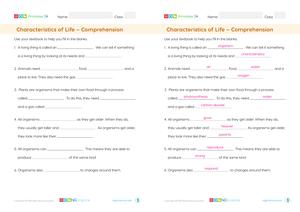Begin the lesson by introducing the concept of cells as the fundamental building blocks of all living organisms. Discuss how cells carry out essential life processes such as growth and reproduction.
Go to the LessonLearning Objectives
- Understand that all organisms are made up of cells, which are the smallest unit carrying out life processes.
- Differentiate between unicellular and multicellular organisms, and identify examples of each.
- Describe the role of different types of cells in multicellular organisms, such as plants and animals.
- Recognize the specific functions of plant and animal cells, including the role of chloroplasts in plants.
Introduction and Hook
Engage students with a question: 'What do you think is the smallest unit that makes up a living thing?' Encourage them to share their thoughts and ideas.
Direct Instruction
Explain the difference between unicellular and multicellular organisms, providing examples such as bacteria (unicellular) and plants and animals (multicellular).
Guided Exploration
Guide students through a discussion on the specific functions of plant and animal cells, emphasizing the role of chloroplasts in plant cells.
Hands-On Activity
Have students classify organisms around the classroom or schoolyard into unicellular and multicellular categories. Use hand lenses to observe small organisms.
Independent Practice
Check for Understanding
Conduct a quick quiz to assess students' understanding of the differences between unicellular and multicellular organisms.
Try the QuizReview and Reflection
Encourage students to reflect on what they learned about cells and their functions. Ask them to write a short paragraph summarizing their understanding.





